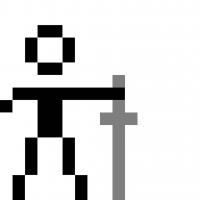I'm not much of a fan of these recent "make everything white" shift. For example my note 3(maybe its just the note3 that had this, idk), back when it had 4.2.2(or 4.4.2?) it had colorful icons in the notification bar. Then 4.4.4 got released and suddenly it all shifted to white. While not a critical feature, it was probably the most annoying thing i felt about the updates, still is all white on lollipop.
Yea - Microsoft Office did that too a few years back (and supposedly Visual Studio, but I've no experience with that). Took awhile getting used to it, but I eventually did.
Office 2010 vs Office 2013
Maybe the idea is to reduce contrast in the peripheral of an application, so you aren't distracted from the main content or something. Personally, I like contrast between the main content area and the peripheral, which the new version has much less of, and I like the ability to visually find what toolbar buttons I want quickly by icon colors, instead of having to read the text - I can still do that with Office 2013, though I wonder if I'm slower because of less colors.

The lack of a border on the first image is because of a trend to make the titlebar more functional by button buttons on it and making any tabs or file menus a (visually) seamless part of the titlebar. Personally, I like that trend because it wastes less space with the titlebar by using some of the empty titlebar space for other purposes. It's just inconsistently applied across Windows - most of the core Window OS windows are inconsistent with it. I think the trend is more on the application-development side, rather than the Window OS department. Microsoft Office does it, Google Chrome and other browsers do it (including Internet Explorer).
Some applications halfway do it by putting buttons in the titlebar but still have a border dividing the titlebar and the filemen/tabs/whatever (Win8's MS Paint, Windows Live).
Personally (this is Win8.1), I'd rather have a border beneath the toolbar separating the content from the tools, then a border between the toolbar and the titlebar:

And then I'd probably use the extra space to add tabs ABOVE the titlebar, with OS-level support for multiple instances of the same application automatically being tabbed (unless the application explicitly overrides it). Tabs ofcourse would be able to be dragged out into their own window, just like Google Chromes. And perhaps easy OS-level ways to automatically split a large window into two views at once (i.e. "View tab A and B side-by-side").
As for border thickness, I'd like it larger than 1px, but I don't need Win8's eight pixel borders. 2px or 4px would seem fine to me.
However, I just realized that Microsoft Word 2013 (when not maximized) also has one pixel borders (and I'm running it on Windows 8.1). Since I've never noticed it, and it's never caused me a problem, then that means 1px borders are fine for me. My biggest potential problem with 1px borders would be trying to hit the borders properly for resizing the window... but I can resize Microsoft Word 2013's one-pixel borders just fine - even though it's only drawing 1 pixel, you still have between 7 and 9 pixels of potential grab-space (starting from the border and moving outward, so as to not impede on the application's client-area functionality).














